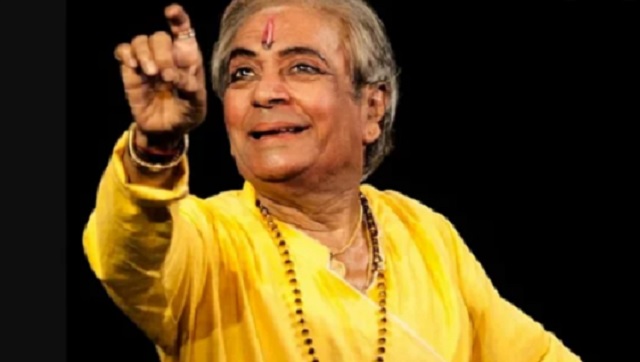It was almost six weeks before I reached Mysore that I got to know of RK Narayan’s house, that is now a museum. Missing a visit to this house while being in the city, would have been akin to skipping Shivaji Park in Mumbai despite being an aspiring cricketer. To many, RK Narayan is to Indian English writing what Sachin Tendulkar is to cricket, or maybe even more. And that he is no longer around, does not change that in anyway. His words will stay on forever, through the web of stories he spun in the fictional South Indian town of Malgudi.
As a teenager growing up in a rough neighbourhood in Navi Mumbai (or New Bombay as it was then known), Malgudi would quite often suck me in with its sublime pleasures. It was my mother who brought these books for me from the Central Railway Library at VT Railway Station (now called CST). Swami and friends, The English Teacher, The Man Eater of Malgudi, Waiting for the Mahatma…the list goes on. Malgudi was once such an important part of my life that I believed it really existed, despite knowing well that it was an imaginary town. Many yearned for Shangri-La, but all I wanted to be at, was Malgudi.
Then came a phase when I realised that Malgudi was not a place, but it lay hidden in the corners of the many places I visited. I could see it in the moss-covered boundary walls of my ancestral town of Udupi. Sometimes I spotted it in the tea shops in towns across Kerala. And despite my reading list having broadened, Malgudi continued to stay with me, somehow.
I had heard that the writer’s house in the upper middle class neighbourhood of Yadavagiri in Mysore was quite minimalistic. That even an enthusiast like me would find it difficult to spend more than an hour there, was the verdict.
The first thing I noticed after the plaque that read ‘RK Narayan’s house’, was the rather humble cello-taped paper printout suggesting rather than announcing a ‘Welcome’, both in English and Kannada. That, more or less, set the tone for the tour. Always gentle, but also always functional. Apart from myself, the only people to walk in that Sunday morning were a family of three. The lady gave me a confused look as I was reading the oversized articles about Narayan. Probably she found it intriguing that I would be so absorbed by plain words.
Not long ago this house was in ruins and its future was quite uncertain. Narayan’s grand children had decided to redevelop the house and had engaged a developer who was tearing down the house down step-by-step. It was only when a local newspaper started a campaign that the Mysore Urban Development authority stepped in and announced that the house was a heritage building. After negotiations with the family, the house changed hands and led the way for this restoration. That the city commissioner took a personal interest in this cause, helped.
Also, the brief for the architect was to restore the building the way it was when Narayan lived here for almost two decades. He had then moved to Chennai in his nineties and continued to live there till his death in 2001.
Even the kitchen, dining room, prayer room and bathroom are as simple as they can get, all of them with whitewashed walls. For a fan like me, there was a certain kind of thrill in realising that I was walking on the same red oxide floor that once my role model had. The house does, however, do a good job of listing his achievements and awards, like the Padma Bhushan and Padma Vibhushan which are on display in glass cases, and so are his clothes.
One of the articles printed on an over-sized board is by Khushwant Singh who wrote that Narayan’s humility was ‘deceptive’, despite being an admirer of his many traits, including writing. N Ram, the editor-in-chief of The Hindu reminisces in one of the articles about his conversations with the writer in the sunset years of his life. He mentions how Narayan had once said, “I have become lazy after I entered my nineties.”
The special room, though, is the one with the curved wall and four windows, providing a 180-degree view. Narayan is said to have wanted this specifically. To imagine him working on his creations here almost made my hair stand on end. And right next to the room is the massive balcony, good enough to play corridor cricket, where presumably the writer must have walked quite a bit.
You may agree that what makes a writer, is what he/she reads. And though I could not confirm if all the books in the house belonged to its illustrious ex-owner, I have enough reason to believe that at least most of them did. Gabriel Garcia Marquez’s works made their presence felt, so did many Tamil classics and that of Narayan’s mentor, Graham Greene, who once said that the Indian writer was probably the best English writer alive.
As I prepared to leave, the well-meaning but slightly uninterested supervisor and guard asked me to fill details in the entry book. It would have been nice to have someone who knew a lot about Narayan manage the museum. But whatever the Mysore authorities have pulled off is already quite commendable.
I was secretly hoping that after spending two hours there, the aura of the place would rub off on me, and my writing would become slightly more readable. But then I remembered that RK Narayan would have disagreed.
As one of the many plaques in the house that bore his quotes announced: “You become a writer by writing. It is a Yoga.”
The writer has travelled to 14 countries, where he took learning-based challenges. Follow his adventures on Twitter , Facebook and Instagram , or on Eccentrips .


)




)
)
)
)
)
)
)
)